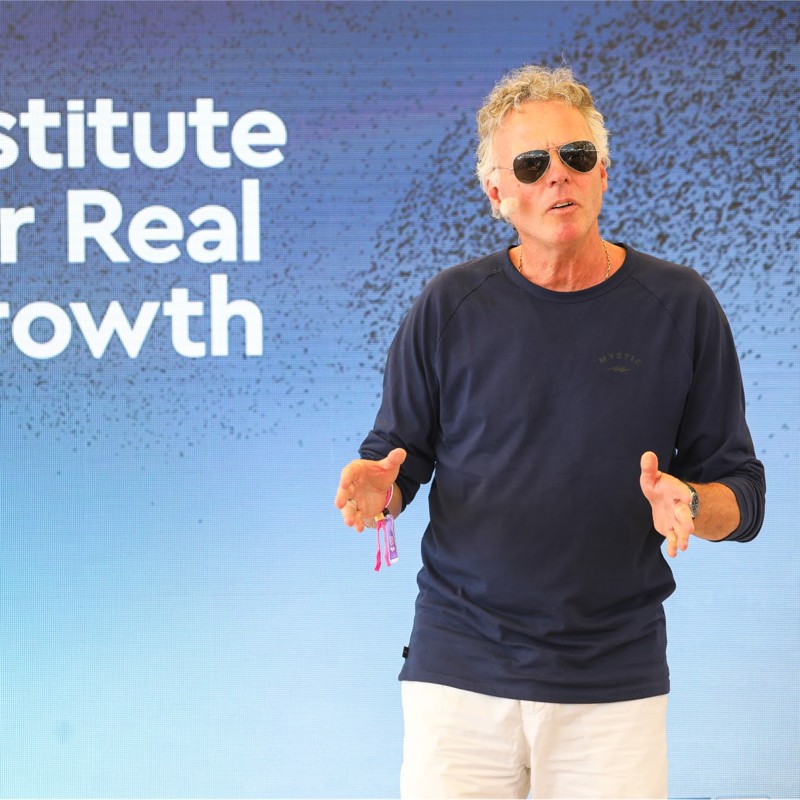How to Build a Successful "Insights Engine"
In today’s highly dynamic business landscape, customer centricity has become the key competitive advantage. In this case, customer centricity refers to the deep understanding of your customers’ needs and being able to fulfill them better than anyone else. In order to understand how successful firms achieve such high levels of customer centricity; we partnered with Unilever to study the correlation. The results of this partnership are featured in this month’s issue of Harvard Business Review in an article I co-wrote with Unilever CMO, Keith Weed and Unilever Head of Insights, Stan Sthanunathan.
I like to refer to the ability to turn data into insights, and insights into a strategy as the “Insights Engine”. The findings from our Insights2020 study (a global study which involved interviews and surveys of more than 10,000 business practitioners), have highlighted, that of the factors that were found to drive customer centric growth, none mattered more than a firm’s Insights Engine. Specifically, we found 10 characteristics that have been proven to make a successful Insights Engine, using examples from Unilever’s own path to customer centricity. The 10 characteristics are divided into two groups: operational characteristics and people characteristics.
Operational Characteristics
1. Data synthesis
Data synthesis refers to a firm’s ability to not only collect large amounts of data, but also being able to connect the dots between each data set and creating a “full picture.” According to Insights2020, 67% of over-performing firms stated that their companies do this well, whereas only 34% of under-performing firms said the same. Unilever has taken this on by implementing a global marketing-information system that is accessible to any employee. This system integrates all of Unilever’s customer data and presents it in consistent formats.
2. Independence
The Insights2020 study indicates that for an Insights Engine to be successful there needs to be a direct relationship between the team and the C-suite. In fact, 29% of over-performers stated that their insights leader reports directly into the CEO, while only 12% of under-performers agreed. At Unilever, Stan Sthanunathan reports to a member of the executive board—coauthor Keith Weed, who leads marketing, communications, and sustainable business functions. This reporting structure makes CMI a fully independent function with direct lines to the CEO. In this position, CMI can be objective, collaborate on an equal footing with other functions, and challenge or even set the direction of functional and organizational projects and strategy.
3. Integrated planning
In order for a firm’s Insights Engine to prosper, they must be included in every aspect of the business and brand planning cycle, ensuring that resources are properly allocated from the beginning. Activities must be aligned during the planning cycle with those of strategic planning, marketing, finance, sales, and other functions. That’s why substantially more over-performing firms than under-performing ones (61% versus 46%) include insights leaders at all key stages of the planning cycle. At Unilever, CMI uses a software tool called Growth Scout, which mines millions of data points on consumer demand across demographics, regions, and countries to quantify the potential value of deeper category or brand penetration. Recently, the CMI homecare team used Growth Scout to uncover new, potentially lucrative markets for Unilever detergent brands by identifying demographic segments with weak penetration.
4. Collaboration
The I2020 study found that on average, 69% of respondents from over-performing firms said they work closely with other functions and customers, compared with just 52% of those in under-performing companies. Unilever’s CMI team recently collaborated with IT to create “smart” information sharing platforms, like PeopleWorld, that anyone at Unilever can use. Similarly, CMI’s organizational structure includes teams that focus on personal care, home care, foods, and refreshments.
5. Experimentation
Over-performing companies are three times as likely as under-performers to embrace a culture of experimentation, the I2020 research shows (40% versus 13%). Unilever has formalized experimentation in a variety of ways, most visibly in its 2014 launch of the Foundry. Originally a marketing-technology start-up incubator, the Foundry has since expanded to include hackathons, a collaboration platform for addressing sustainability issues, another platform that sources and gives prizes for creative marketing concepts, and a mentoring program that connects start-ups with Unilever experts who advise on product and brand development, and marketing strategy.
6. Forward-looking orientation
Until recently, marketers looked to the past in hopes of getting a better understanding of the future. Most firms today have shifted substantial attention to studying the present, monitoring consumers in real time to anticipate what they’ll do next. Unilever has taken the next step, using predictive analytics and other technologies, along with new organizational structures, to both anticipate and influence behavior. Though over- performers currently aren’t far ahead of under-performers in this regard (32% versus 28%), the I2020 research suggests that the gap is widening, and we expect the trend to continue. At Unilever, CMI has used a custom tool to analyze hair-related Google searches; the program identifies styling trends and rapidly creates how-to videos featuring Unilever products on a YouTube channel called All Things Hair. There, visitors can browse by hair type and buy relevant Unilever products.
7. Affinity for action
The most influential insights functions focus as much on strategy as on data. I2020 found that 79% of insights functions at over-performing companies participated in strategic decision making at all levels of the organization, compared with just 47% at under-performing companies. At Unilever, CMI pointed out the large “size of the prize” that Unilever stood to gain by expanding the markets it operates in. Company leaders acknowledged this as the firm’s biggest growth opportunity. CMI helped break the challenge into three parts—generating more product users, more usage, and more benefits for users—and then helped identify ways to attack those challenges.
People Characteristics
8. Whole-brain mindset
High-performing organizations are particularly adept at integrating the two types of approaches; far more respondents from over-performers than from under-performers agreed that their insights functions were skilled at whole-brain thinking (71% versus 42%). At Unilever, CMI runs “Upping Your Elvis” workshops. The energetic and interactive training pushes people out of their default thinking styles and gets them to engage in creative problem solving with colleagues they might not normally connect with.
9. Business focus
Insights2020 found that respondents from high-performing firms were much more likely than those from low performing firms to believe that their insights functions were business-focused (75% versus 50%). Unilever uses energetic and interactive training to push people out of their default thinking styles and get them to engage in creative problem solving with colleagues they might not normally connect with. To reinforce the connection between insights and growth, staff bonuses are linked to the wider business unit performance. This creates shared accountability with other functions, encourages CMI teams to take responsibility for growth, and motivates them to go the extra mile.
10. Storytelling
The I2020 research imparts a final lesson about what makes for a strong Insights Engine: good storytelling. At over-performing firms, 61% of surveyed executives agreed that people in their insights functions were skilled at conveying their messages through engaging narratives; at under-performing firms, only 37% agreed. At Unilever, CMI has embraced storytelling. Traditionally its presentations were data-intensive, built on the assumption that a fact-filled talk would be more persuasive than a fact-based one with less data and more narrative. Although data has its place, CMI has moved away from charts and tables and toward provocative storytelling, embracing an ethos of “Show, don’t tell.” Increasingly, CMI is making its points with memorable TED-style talks and other experiential approaches.
To read the full HBR article, as well as take a simple test to benchmark your organization’s Insights Engine, please visit: www.insights2020.org
In the meantime, subscribe to the LinkedIn Marketing Solutions blog for daily trends and insights from marketing thought leaders.




